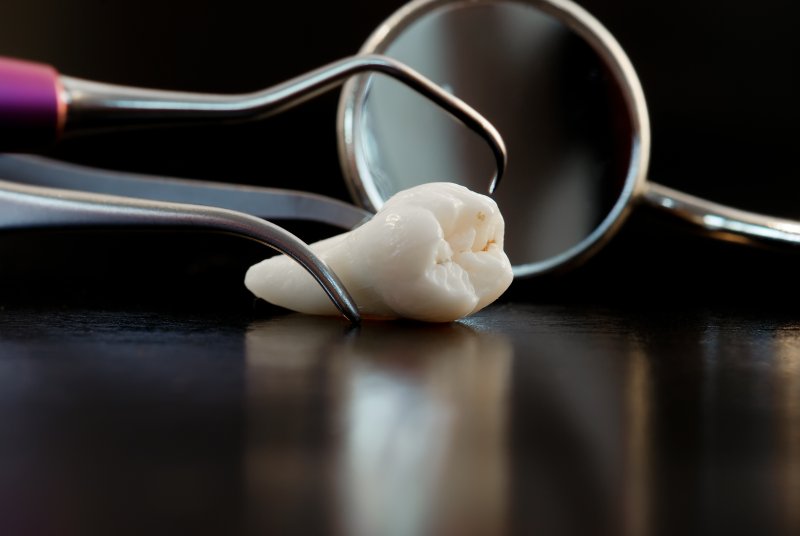February 24, 2021

Are you nervous about your upcoming tooth extraction in Mesquite? Don’t worry, you’re not alone. Most people experience a slight feeling of fear when it comes to having a tooth removed. No one wants to learn that one or more pearly whites need to be extracted; however, if they’re decayed and cannot be saved, or you need additional room for erupting teeth or orthodontic treatment, you can rest easy knowing this recommended treatment is safe and effective. But the one remaining question might be, “Will it hurt?” Before you start filling your mind with uncertainties, a dentist explains what you can expect when it’s time to undergo a tooth extraction.
Step #1: Identifying the Type of Extraction
Once your dentist clears you for treatment, it will be up to them to determine which type of extraction you will undergo – simple or surgical. A simple extraction involves removing a tooth that is partially or fully erupted. A surgical procedure involves making a small incision in the gums and removing a tooth that is impacted in pieces for a smoother process.
Step #2: Providing Anesthesia
Before your emergency dentist in Mesquite begins to extract the tooth, it is necessary that they administer local anesthesia to the area. This will ensure you feel no pain whatsoever throughout the entire process. Not only will the tooth be numb, but the area around it will also feel no discomfort. If necessary, your dentist can also provide sedation dentistry to help keep you calm and relaxed during treatment.
Step #3: Removing the Tooth
Once your mouth is numb and the dentist is satisfied with your level of sedation, they will begin to remove your tooth. Because it is firmly attached within the socket, it will be necessary for them to use specialized dental instruments to separate the tooth from the ligament before extraction. The types of tools used may include everything from extraction forceps that help to grab the tooth to dental elevators that help to expand the socket and create a separation between the tooth and ligament.
You might feel some pressure during a tooth extraction, but you should feel no pain at all.
Step #4: Closing the Socket
Once the tooth is fully removed, your dentist will need to close the gum tissue around the socket. Making sure any sharp areas of bone are filed down to avoid potential harm to nearby soft tissues, they will cleanse the area of any remaining debris before placing clean gauze into the socket to minimize bleeding. Once the gum tissue is closed, you will be instructed to bite down on additional gauze, which will apply pressure to cease bleeding.
Step #5: Recovery
After your dentist has completed the entire procedure, you will be provided instructions as to how to care for your mouth when you return home. From taking necessary medication as instructed to getting plenty of rest and eating soft foods for the first few days, it is important that you follow these guidelines to ensure a swift and successful recovery.
There is no reason to be scared of an upcoming tooth extraction. Your dentist will take additional precautions to ensure your health and safety throughout the procedure as well as provide you with the information you need to effectively heal at home.
About the Author
Dr. Sweeta Walia is a trusted dentist in Mesquite who has more than 15 years of experience. Completing her dental degree at Nova Southeastern University School of Dental Medicine, she went on to finish a General Practice Residency at Staten Island University Hospital. Leading a team of professionals at Dental Impressions, she understands that certain procedures can cause worry or anxiety, which is why she is pleased to provide sedation dentistry to help keep you calm and relaxed even when preparing for a tooth extraction. Contact us at (972) 288-3200 to learn what you can expect from this type of procedure and what we can do to ensure your safety and comfort.
